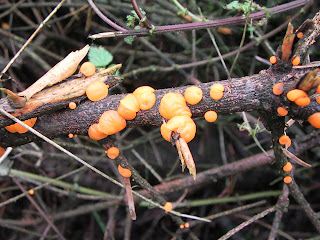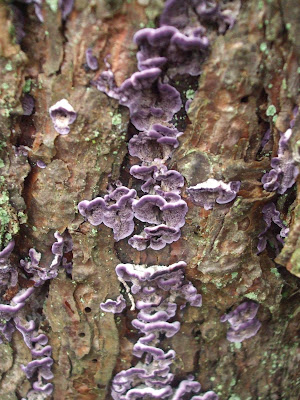Pithya vulgaris
Further to previous posts on the blog regarding the fungi found on recycled Christmas trees at Ogden Water we now have fairly conclusive evidence that the fungi are in fact Pithya vulgaris - a species considered extinct in Britain since 1888. It was first described in 1870 and recorded on just one occasion in Britain.The specimens from Ogden are now at Kew Gardens awaiting confirmation and we are expecting a reply some time today.
.JPG)
.JPG)
.JPG)

.JPG)












































